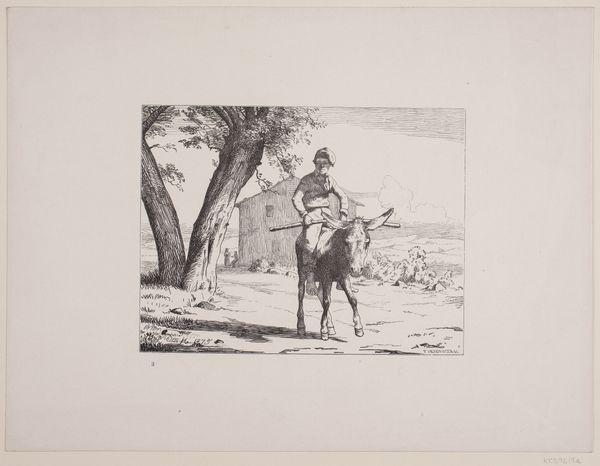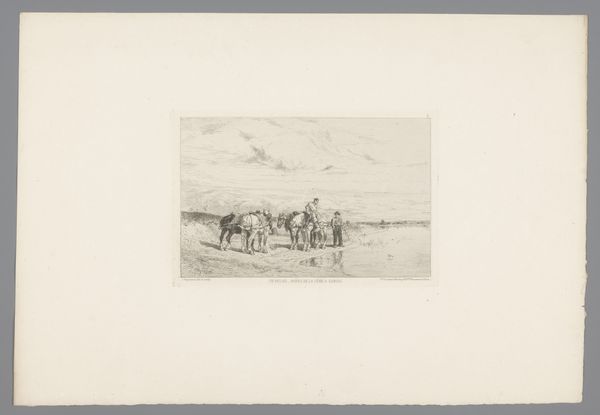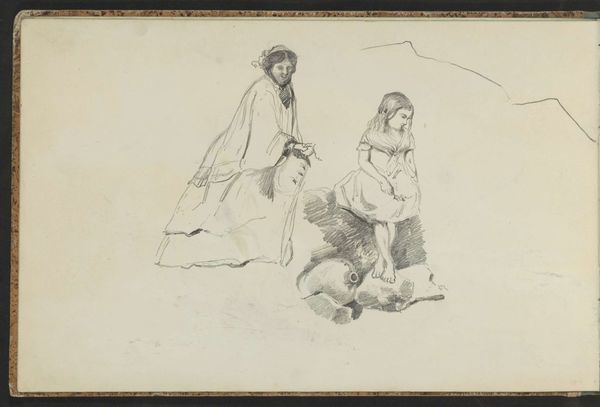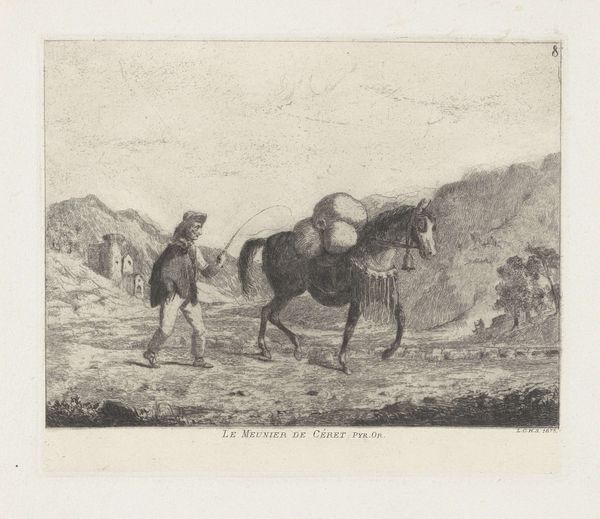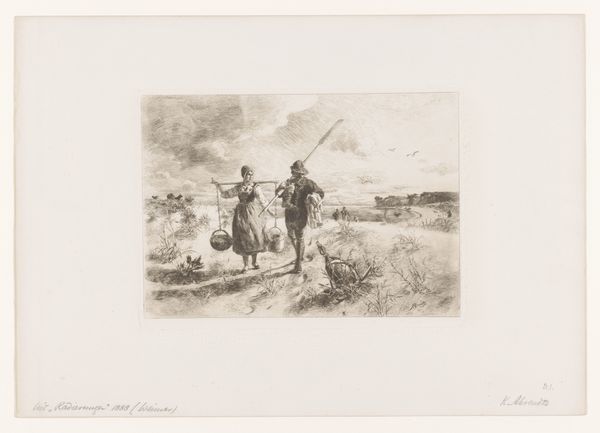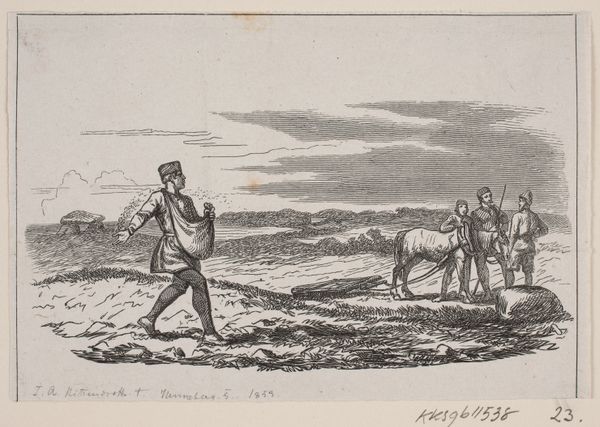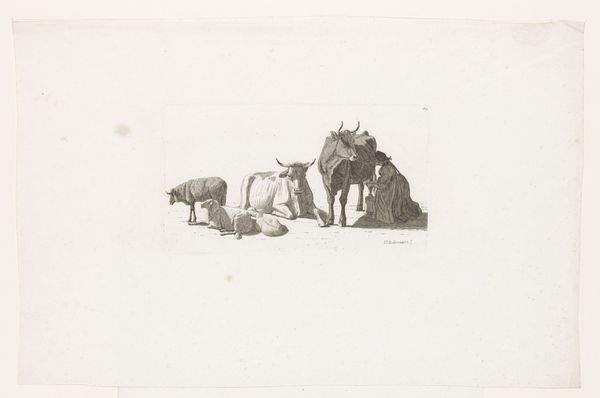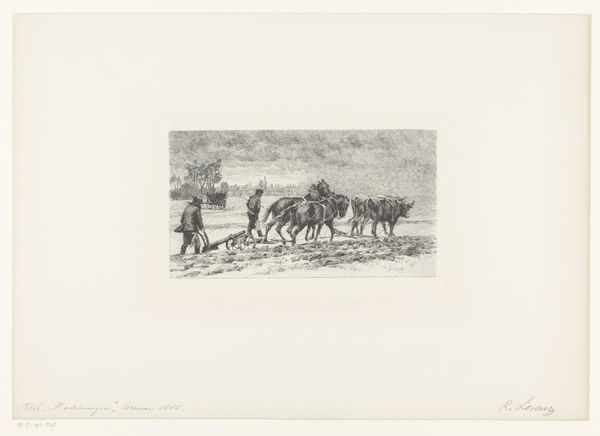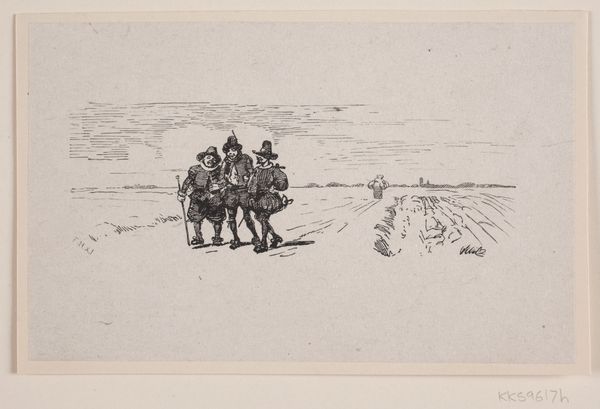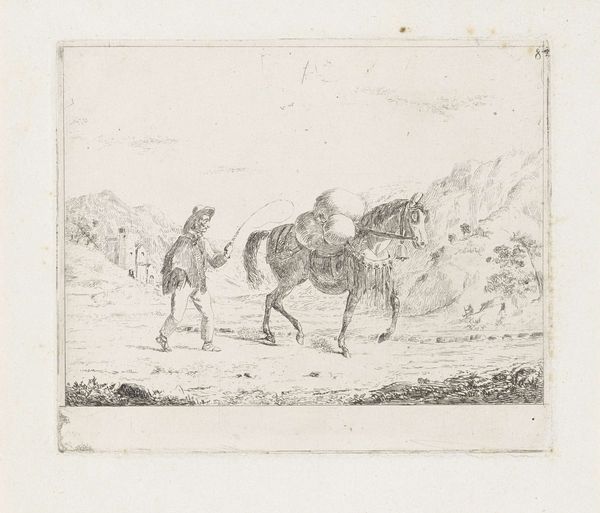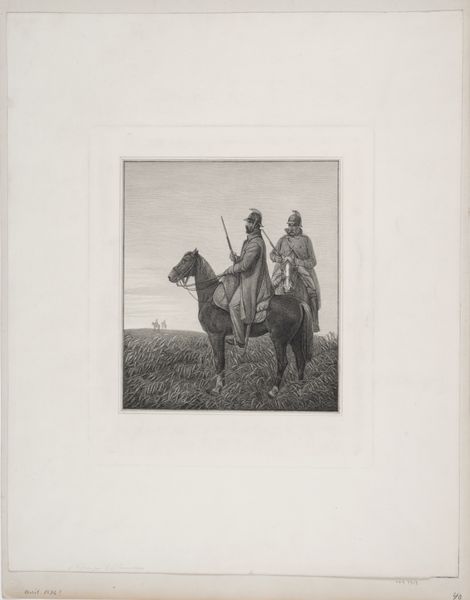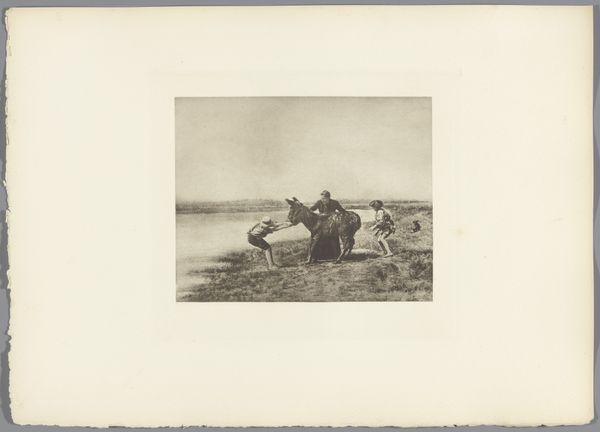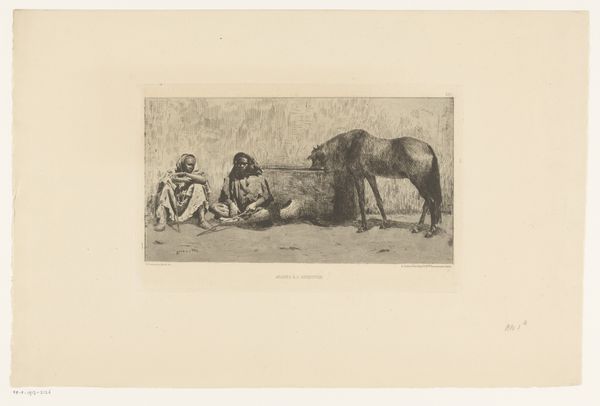
drawing, print, etching, paper, pencil
#
drawing
# print
#
etching
#
dog
#
landscape
#
figuration
#
paper
#
pencil
#
realism
Dimensions: 160 × 236 mm (image); 188 × 248 mm (plate); 281 × 344 mm (sheet)
Copyright: Public Domain
Editor: This is Paul Adolphe Rajon’s "Relay of Dogs in the Desert," made around 1866. It's an etching on paper, depicting a man with two dogs in a barren landscape. What strikes me is the starkness of the scene; the material reality of that harsh environment is almost palpable in the artist’s rendering of the landscape. What do you see in this piece? Curator: The etching process itself is key here. The artist's labour is embedded in every line etched into the metal plate. Consider how Rajon has used this painstaking technique to represent the socio-economic reality of the scene. How might the value attributed to ‘fine art’ differ from the skill and labour invested in craft objects made in this environment? Editor: That's interesting! I hadn’t thought about it that way. I guess I usually think of etching as a 'high art' technique. Is it more of a commentary then, on the division of labor and the social hierarchy implied by this ‘relay’ of dogs? Curator: Precisely. The ‘relay’ isn't just about the dogs. It suggests a broader system of exchange and power dynamics. The materials – the paper, the ink, the plate – all speak to a European artistic market, while the subject reflects a colonial encounter. Consider what materials were readily accessible to those who may have actually lived and worked in the portrayed location versus Rajon who was rendering his perspective of the setting. Editor: So, by examining the materials and the process, we can understand how this artwork engages with themes of labor, colonialism, and even the art market itself? Curator: Absolutely. The 'desert' isn't just a backdrop, but a site of resource extraction and exploitation represented through the materiality of the art itself. What do you think we can extrapolate about the economy that produces this image, and its role in portraying and, perhaps, influencing views of far-off landscapes? Editor: I see the piece in a new light now. I'm struck by how a study of materials can expose a much broader social and historical context. Curator: Exactly. By focusing on materials, we uncover the labor, industry, and power relationships that underpin this seemingly simple landscape scene.
Comments
No comments
Be the first to comment and join the conversation on the ultimate creative platform.
